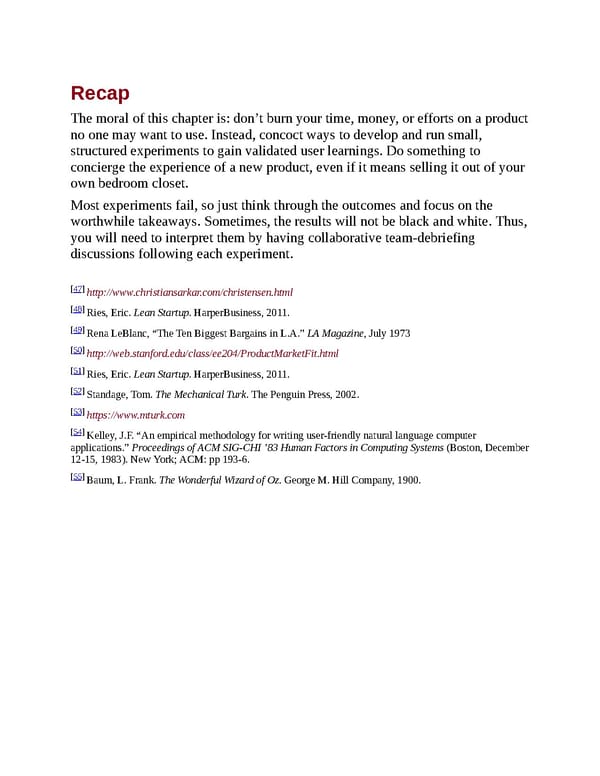Recap The moral of this chapter is: don’t burn your time, money, or efforts on a product no one may want to use. Instead, concoct ways to develop and run small, structured experiments to gain validated user learnings. Do something to concierge the experience of a new product, even if it means selling it out of your own bedroom closet. Most experiments fail, so just think through the outcomes and focus on the worthwhile takeaways. Sometimes, the results will not be black and white. Thus, you will need to interpret them by having collaborative team-debriefing discussions following each experiment. [47] http://www.christiansarkar.com/christensen.html [48] Ries, Eric. Lean Startup. HarperBusiness, 2011. [49] Rena LeBlanc, “The Ten Biggest Bargains in L.A.” LA Magazine, July 1973 [50] http://web.stanford.edu/class/ee204/ProductMarketFit.html [51] Ries, Eric. Lean Startup. HarperBusiness, 2011. [52] Standage, Tom. The Mechanical Turk. The Penguin Press, 2002. [53] https://www.mturk.com [54] Kelley, J.F. “An empirical methodology for writing user-friendly natural language computer applications.” Proceedings of ACM SIG-CHI ’83 Human Factors in Computing Systems (Boston, December 12-15, 1983). New York; ACM: pp 193-6. [55] Baum, L. Frank. The Wonderful Wizard of Oz. George M. Hill Company, 1900.
 UX Strategy: How to Devise Innovative Digital Products that People Want Page 210 Page 212
UX Strategy: How to Devise Innovative Digital Products that People Want Page 210 Page 212